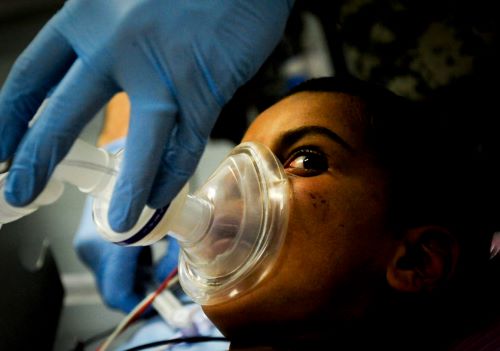

Chances are you’ve undergone a medical procedure requiring the use of anesthesia. The medication is commonly used in a wide range of procedures, covering things ranging from wisdom tooth extraction to major surgery.
Anesthesia can take different several forms, depending on the exact type of procedure that’s being performed. The medication can be used as a localized numbing agent or to induce a loss of consciousness. Designed to inhibit feelings of pain, the medication can also have risks.
Did you know an estimated 17,116 anesthesia errors occurred between 2007 and 2014? These errors can result in minor side effects, such as vomiting, to more serious complications that can occasionally result in death. If these complications are the result of negligence on the part of a medical practitioner, your complaint may be eligible for a malpractice claim.
A Look at the Different Types of Anesthesia
Medical professionals rely on three types of anesthesia to help keep patients calm and pain-free during certain procedures.
- Local anesthesia: Used to numb a specific area. For example, the area surrounding a tooth that’s about to be extracted.
- Regional anesthesia: Numbs a larger section of the body—an epidural is an example of this type of anesthesia.
- General anesthesia: Induces unconsciousness, and is typically used during major surgeries.
Before undergoing anesthesia, a medical professional will go over what to expect and any potential risks. However, complications can still occur, resulting in anesthesia malpractice.
Types of Anesthesia Malpractice Lawsuits
Malpractice involving the administration of anesthesia can happen before or during a medical procedure. Every situation is unique, but here are some examples of common anesthesia errors that can result in malpractice cases.
Errors During Intubation and Extubation
The process of intubation and Extubation occurs when general anesthesia is used. Patients often experience difficulty breathing since the medication can temporarily paralyze their muscles. This includes muscles in the diaphragm. To ensure oxygen is constantly flowing, a tube is inserted down their windpipe.
If the tube isn’t properly inserted, complications that include the following can occur.
- Anoxic or hypoxic brain damage due to lack of oxygen
- Nerve damage in the neck or esophagus
- Dangerously quick heartbeat (arrhythmia)
- Stroke
- Perforated trachea
- Injuries to the lips, mouth, or teeth
- Paralysis of the vocal cords
The same complications can also occur if the tube is improperly removed (Extubation).
Errors with Dosage
Anesthesia isn’t a one-size-fits-all dosage. Various procedures often require different medication dosages. Every patient is also unique, and this affects dosage amounts.
An anesthesiologist is responsible for administering the correct dosage—too little can result in the patient waking up before surgery is completed, and a too large dose can induce a coma or even death. Organ damage is also possible when a patient receives a high dosage.
Errors Monitoring the Patient
Anesthesiologists are not only responsible for administering the medication, but they also monitor the patient during the procedure, which means keeping an eye on the patient’s vital signs, level of consciousness, and blood oxygen levels. Another responsibility is preventing nerve damage that can occur if a patient isn’t periodically moved during the procedure.
Nerve damage frequently occurs when a nerve is pinched, which ultimately results in restricted blood flow. Along with the possibility of developing nerve damage, the loss of blood flow can negatively impact other vital organs.
Experience Aspiration
What is aspiration? The condition can occur when anesthesia is preventing a patient from swallowing. Liquid, food, and even vomit can get into the patient’s lungs and trachea.
When this occurs, your risk of developing aspiration pneumonia significantly increases. Not only does the condition make it difficult to take in oxygen, but it can also lead to severe lung damage.
Additional Anesthesia Errors
Turning off the monitoring equipment before a patient is fully recovered from the effects of anesthesia can be considered grounds for a medical malpractice suit. This also includes a situation known as anesthesia awareness.
Anesthesia awareness happens when the medication wears off too soon. For example, in the middle of surgery. Not only can it be a nightmare watching physicians operate on you, but it can also mean you’re feeling every cut, poke, and prod performed by the operating physician at hand. Remember, anesthesia also numbs pain as well as helps you lose consciousness.
Proving Your Anesthesia Medical Malpractice Case
Before the anesthesia is administered, your anesthesiologist should go over the potential risks and side effects associated with the medication. Your anesthesiologist should also be familiar with your medical history to ensure there aren’t any potentially harmful or deadly risks.
As a patient, you also have a responsibility to carefully follow all of your physician’s instructions throughout the process. This typically means not eating or drinking a few hours before the medication is administered.
If your anesthesiologist doesn’t familiarize themselves with your medical history or go over the potential risks, this can help strengthen your malpractice case if complications occur. However, if you don’t follow your physician’s directions, it can be grounds for having your case dismissed.
So, you’re experiencing complications as a result of the anesthesia. Regardless of the type of error and whether it occurred before, during, or after surgery, your case must prove four essential points. Failing to prove all four points typically leads to your case being dismissed.
The four points you and your attorney must prove are:
- Breach of care: This means the anesthesiologist didn’t fulfill their duty of care.
- Causation: At this point, you must prove that the breach of care is directly responsible for your injuries or medical complications.
- Injury: This is the harm caused to you as a result of negligent care.
- Duty: You must establish a relationship between yourself and the anesthesiologist. This typically means proving the anesthesiologist is the person who administered the medication.
Proving these four points can seem like a daunting task, but your medical records contain a majority of the information necessary to prove your medical malpractice case.
Don’t File a Medical Malpractice Case Alone
You may have all of your medical records, including new files detailing the extent of your injuries. However, this doesn’t mean you’re ready to head to court alone.
With an experienced medical malpractice attorney by your side, you can more easily navigate the often complex legal process. This often means receiving full compensation for your injuries and any other health complications resulting from anesthesia errors.


